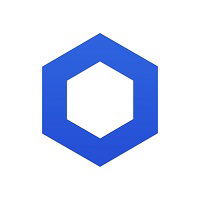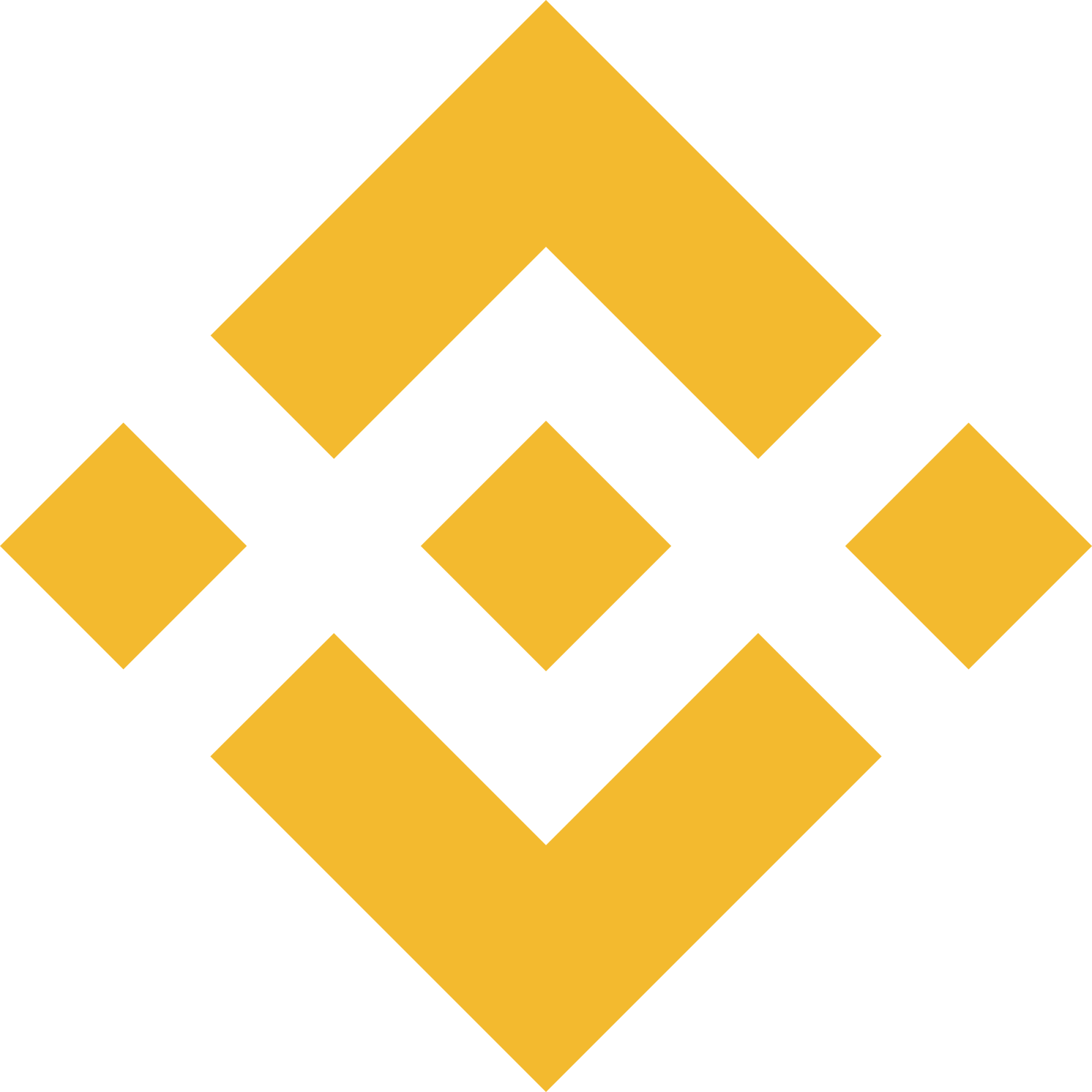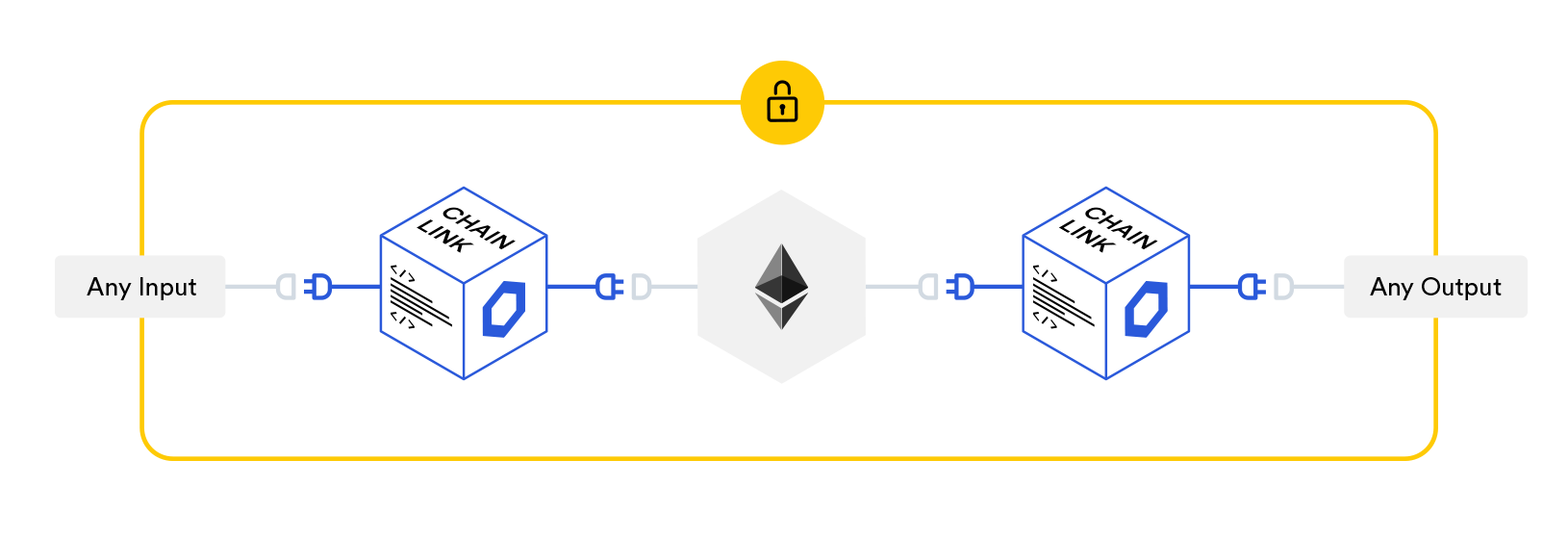Chainlink Review

| We recommend to buy Chainlink at Binance Exchange |  |
Chainlink Review
The Chainlink tokennsale was completed in September 2017. On May 22th 2019, Chainlink daily volume reached the all-time-high $135 million, which is almost four higher than the 35mln previous ATH in the beginning of 2018. The price has also surpassed the previous ATH in January 2018. There are hardly many coins achieved such result. So, let’s find out more about this project and try to answer the question: "Is Chainlink a good coin?"
Concept
It may be quite hard to grasp the technical concept of Chainlink, as it requires some understanding of smart contracts. Let’s try to go step-by-step and find out more.
Smart contracts are digital contracts that provides the mechanism to be executed according to pre-determined conditions/parameters. Smart contracts need data to determine if, or how, they should be executed. Though the smart contracts are secure, they depend on the security of data input as well. Smart contract can’t reach the real-world data and ensure it is provided correctly.
So, the correct interaction between smart contracts and real-world data is vital. The correct data input is the main pain point here. To be truly useful, smart contracts require multiple data inputs, as well as multiple outputs to interact with the outside systems.
Smart contracts may be connected to data inputs through a single node. However, it makes the whole smart contract as reliable as the node. That means that failure in one single process will affect the whole system. This is a centralized approach different to blockchain ideas.
That’s why Chainlink is developed to become the decentralized oracle network (oracle, in blockchain, is a way to connect real-world data and smart contracts). Chainlink’s oracle network makes the data input process secure. The mechanism is based on multiple Chainlinks verifying the same data.
 The Chainlink network provides reliable tamper-proof inputs and outputs for smart contracts. Source: Chainlink website
The Chainlink network provides reliable tamper-proof inputs and outputs for smart contracts. Source: Chainlink website
The security is reached as the result of decentralization. Multiple oracles validate the data input. This makes the whole smart contract more secure and reliable by eliminating the necessity to be dependent from one single node.
The wider adoption of smart contracts is hardly avoidable. However, the oracles issue is extremely complicated and a matter of debate. The concept of oracle centralization/decentralization is not considered black and white as various types of oracles have their own strengths and weaknesses.
To sum up, the main idea behind Chainlink is developing the first decentralized oracle to provide smart contracts with reliable data and make them more useful for the real world.
Chainlink Team
Chainlink was designed by SmartContract.com, San Francisco Bay Area located company. Chainlink website indicated 11 team members + 8 advisors. Let’s take a look at some key members of the team.
Sergey Nazarov, Co-founder, and CEO. Before SmartContract.com, he founded Secure Asset Exchange and CryptoMail.
Steve Ellis, Co-founder, and CTO. Professional software engineer and Co-Founder of Secure Asset Exchange.
Dan Kochis, Global Head of Business Development & Partnerships. Has a vast experience in business development, corporate development, strategic partnerships, account relationship management, and product management.
ChainLink has an impressive advisory board, including Andrew Miller, Associate Professor of Computer Science at the University of Illinois and an advisor to Tezos and Zcash, Hudson Jameson, blockchain expert, and Ethereum contributor, and Evan Cheng, Director of Engineering at Facebook and advisor to Zilliqa.
Communication
Though there is significant awareness of Chainlink in the global crypto community, the social media channels have a moderate size, with 5k on Telegram and 13k Twitter followers. It can be explained by the testnet stage of Chainlink.
The website is quite informative. There is technical documentation for developers with guides and explanations. Though some core principles still might be hard to understand without a certain degree of technical knowledge. Legal information is on the website as well.
As for partnerships and collaborations, the Chainlink’s list include multiple companies and organizations. Brave New Coin, Morpheus.Network, Wanchain, Data Sports Groups, Celer, Hedera Hashgraph, to name a few. For example, collaboration with Hedera Hashgraph has an aim to provide a decentralized oracle network for Hedera's distributed public ledger. An important role is paid to collaboration with other blockchain projects. This is reasonable, as smart contracts/smart contract platforms is what oracles are needed for. Of course, this list will likely be expanded with the launch of the mainnet.
Product
Chainlink has the LINK token, which is based on Ethereum. Link is ERC-677 token, which has all ERC-20 tokens functionality + allows token transfers to contain a data payload. The Link should be possible to store in all ERC-20 compatible wallets.
The utility of LINK token is serving as the Chainlink platform payment method. It is used to pay node operators for data retrieval. As LINK is the part of the platform, it’s value should grow with the growth of the whole platform.
The ChainLink Network is a network with Chainlink nodes. The nodes allow to provide external data directly to smart contracts. External data may represent an APIs, blockchains, networks, and so on. The nodes are run by node operators. Running a Chainlink node requires no LINK tokens. However, a such node may not be able to participate in requests that require some LINK deposit. Requesters may specify an amount of LINK that all nodes must deposit as a penalty fee in case the node doesn’t fulfill the request. However, since penalty fees are optional, not all requests will require it.
The architecture of Chainlink Network has two components: on-chain and off-chain. On-chain consists of three main contracts: a reputation contract, an order-matching contract, and an aggregating contract. The reputation contract keeps track of oracle-service-provider performance metrics. The order-matching smart contract takes a proposed service level agreement, logs the SLA parameters, and collects bids from oracle providers. The on-chain workflow has three steps. Firstly, the oracle is selected. Secondly, the data is reported. Finally, the results are aggregated.
Off-chain part of the network consists of the Chainlink nodes, connected to the Ethereum network. An off-chain node can provide the Chainlink network with relevant information in the industry it is related to. For example, a node run by a postal service can provide information about shipping data.
To put it simple, Chainlink is a decentralized and tamper-proof blockchain middleware for connecting smart contracts with external data sources and APIs. Chainlink network has LINK tokens to function as a cryptocurrency. Chainlink is on the testnet stage. The mainnet is scheduled for May 30, 2019.
Chainlink Summary
- Decentralized oracle network.
- The main goal is connection of smart contracts and the real world.
- Creating the network, which allows smart contract to connect with relevant external events, APIs, or payment methods.
- Strong team and advisory board.
- Good level of technical information delivery.
- Many partners, including Brave New Coin, Wanchain, Data Sports Groups, Celer, Hedera Hashgraph.
- Mainnet to be launched on May 30, 2019.
Conclusion and Chainlink Rating
Chainlink is the new tool to ensure that smart contracts have reliable data inputs/outputs. This is an essential step towards better connection of smart contract and the real-world economy.
The success of Chainlink as a cryptocurrency project depend on three major factors:
1. The global adoption of smart contracts.
2. The demand for decentralized oracles for smart contracts.
3. The ability of Chainlink to grow into a secure and reliable decentralized oracle.
Having these factors together is challenging, yet all of them are vital for the long-term success of Chainlink. Chainlink is an infrastructure project for the whole blockchain industry, which give it an outstanding potential. In the same time, the team effort is necessary but not sufficient. The reason is that the demand for decentralized oracles is still just shaping up, and it’s hard to predict how big it will be in the future.
Overall, Chainlink seems like a project with the excellent idea and the team to bring it to life. The technical concept and solutions make Chainlink unique. In our opinion, Chainlink is among the undervalued crypto projects.
| Concept | Team | Communication | Product | Overall |
| 7.9 | 8.1 | 7.5 | 8.0 | 7.9 |